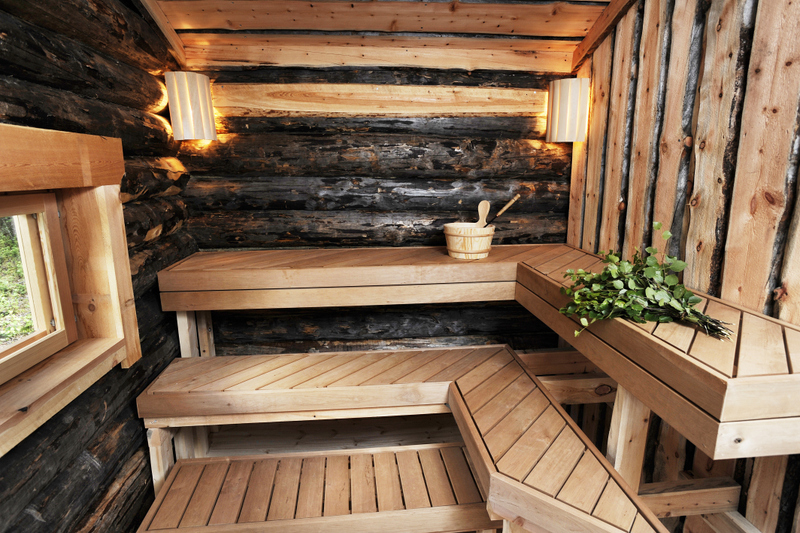Traditional Sauna - An Overview
Table of ContentsThe Main Principles Of Traditional Sauna Traditional Sauna - An OverviewThe Basic Principles Of Traditional Sauna Little Known Questions About Traditional Sauna.Traditional Sauna Can Be Fun For Anyone
The majority of the weight shed in a sauna is water loss and is re-gained upon rehydrating. Nevertheless, certainly sauna can be a fundamental part of a healthy weight-loss program. To take a look at the differences in between standard and IR saunas, I will certainly divide these right into verifiable, theoretical, and produced differences.Therefore, the most popular factor in the saunawhich goes to the ceiling directly over the sauna heateris normally in between 185 and 190 F. Claims that a standard sauna goes beyond 200 F is merely not real and not relevant for electrical saunas offered in the US. The temperature level for a far-infrared sauna is normally set between 120 and 140 F; nonetheless, unlike the conventional sauna, the objective in and IR room is not to achieve a high temperature level.
As a result of this, the temperature difference is nearly irrelevant, considering that excessive sweating leads to both sauna types, but the approach of heating up the body is various. In an IR sauna the bather will really feel warm and will certainly sweat a lot, but at much lower temperatures (Traditional Sauna). Hence, if the objective is to invest longer time periods in the sauna, the IR sauna is a good selection
When a traditional sauna has been effectively heated, the sauna walls are warm, the air temperature has accomplished established temperature level and the rocks are incredibly warmed. As an interesting side note, the heated walls and the rocks are emitting far-infrared warm, combined with the warmed air, to produce an "wrapping up heat".
Some Known Details About Traditional Sauna

When the high temperature level is attained, the components cycle on and off to maintain the high temperature. A lot of traditional sauna users delight in pouring water over the rocks to create heavy steam to increase sauna humidity degrees. The advantages of putting water over the rocks consist of: making the space a lot more comfortable, dampening the nasal flows, and enabling the use of aromatherapy by blending important oils with the water.

When the power goes into the body, it causes the body temperature to increase and eventually causes perspiration. In an infrared sauna it is very important for the emitters/heaters to continue to be on practically frequently. Since there is no mass of rocks to maintain warmth, the sauna will certainly cool down if the emitters closed off.
As pointed out over, the sauna bather in an infrared room wants to position himself in front of operating emitters to obtain maximum benefit from the warm. The home heating time for both rooms can be very different, depending on just how the areas are utilized. For a conventional sauna, a bather must permit 30-40 minutes for the room to accomplish a preferred temperature and to effectively pre-heat the rocks.
Some Known Details About Traditional Sauna
A well constructed sauna will generally attain a temperature level of 150-160 F in regarding 30-40 mins. For hotter temperatures, the area might require to warmth for a longer period.

Traditional saunas tend to be bigger (therefore use more electrical energy) than infrared saunas, although standard saunas are absolutely readily available in one and two person dimensions also. For a two-person typical sauna, 5x6 or 5x7 dimension is most popular. The top bench can easily seat 2 or three individuals and is additionally long sufficient to relax throughout the sauna session.
Traditional Sauna Things To Know Before You Get This
The typical cost per kWH of power in the U.S. is about $0.11, so a 4.5 kW heating system will certainly cost approximately $.50 to run for one hour, if the heater runs continuously for one hour. Usually a sauna heating system will certainly run click for source for 75% of the initial hour and 50% of succeeding hours on since the elements cycle once the set temperature is accomplished.

Ultimately, there is a seldom reviewed distinction in the social experience in between the 2 spaces. While our culture has lost some of the social benefit of the typical sauna experience, it can be extremely socially fulfilling (Traditional Sauna). From family time in the sauna, to heart-felt discussions with substantial go others, to sauna partiesthe conventional sauna experience can bring about intimate this website mingling
The 5-Second Trick For Traditional Sauna
The majority of higher end infrared spaces consist of tinted light therapy, sound systems and full-glass fronts.